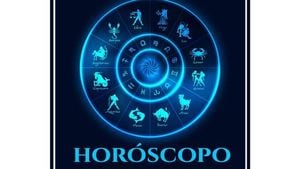NEW ORLEANS — The iconic Mardi Gras celebrations took on a new layer of urgency on Tuesday, March 4, 2025, as severe weather threatened to disrupt the festivities. With forecasted storms bringing damaging winds and possible tornadoes, city officials swiftly rescheduled the final Carnival parades to earlier time slots, determined to preserve the spirit of the occasion.
The National Weather Service of New Orleans had issued stern warnings about the impending severe thunderstorms, which included the potential for tornadoes with winds reaching EF-2 strength, clocking between 111 and 135 miles per hour. By evening, reports indicated possible tornado damage near Gramercy, around 40 miles west of New Orleans.
Despite the looming threats, masked riders on elaborate floats and costumed revelers braced themselves for the grand finale of this year's pre-Lenten celebration. Many were eager to enjoy the final day of Carnival, embodying the resilient spirit characteristic of New Orleans.
New Orleans Police Superintendent Anne Kirkpatrick mirrored this sentiment, emphasizing the importance of the parades. "Canceling the parades would have been the easier decision, but leadership doesn’t always mean an easy decision. When we cooperate, we can make things happen,” she stated. This attitude drove parade planners to adapt, albeit with significant challenges.
Residents were advised to secure outdoor items as winds threatened to pick up and thunderstorms loomed. Jefferson Parish President Cynthia Lee Sheng remarked on the gravity of the situation, saying, "This is disappointing, but our top priority is ensuring the well-being of everyone in our community, and we must always prioritize safety above all else." To this end, Jefferson Parish officials had to cancel all planned Mardi Gras parades.
While Mardi Gras has previously encountered wild weather events, many enthusiasts braved the storms and continued celebrating. Historically, the festival has endured its share of extreme conditions, from the warmest Mardi Gras on record, reaching 83 degrees Fahrenheit in 1917, to the coldest, with icy lows of 22 degrees seen back in 1899. Reports of significant rainfall on carnival days are rare, with the National Weather Service indicating rain has only fallen on about 31% of Mardi Gras occasions.
This year, there certainly seemed to be more on the line. Associated studies reveal the economic impact of Mardi Gras is substantial, contributing approximately $891 million to Louisiana's economy. Many businesses rely heavily on the influx of tourists, with about 1.5 million visitors flocking to New Orleans annually to revel during the celebrations.
Both local media and national weather reports would electronic advertisements reminding everyone to stay updated, advice echoing across broadcasts as the storms approached. New Orleans became part of the larger weather drama affecting much of the central and southern United States, with over 55 million people at risk from severe weather warnings stretching across the region.
The unpredictable nature of Mardi Gras celebrates spontaneity, and this year proved no different as parade organizers made last-minute changes. Some of the city’s most anticipated parades, the Zulu and Rex, commenced significantly earlier than usual and on shortened paths to avoid the worst of the storms.
Local revelers adorned with beads expressed determination. A participant, embodying the city’s defiant spirit said, “We from New Orleans, so we out here anyways; it don’t even matter. Rain or shine, we’re outside.” This resilience is what enhances the Mardi Gras experience, where the festival's essence thrives even amid disturbances.
By late Tuesday, reports indicated damaging winds had started to impact power supply, with 296,000 customers without electricity across Louisiana and Texas. The storm was marked by two EF-1 tornadoes touching down in Caddo Parish, just after nine o'clock, propelling winds past 90 mph, but thankfully resulting in no reported injuries.
Despite the ominous reports, the party spirit remained alive and well. And many locals and visitors continued to fill the streets, exchanging beads, enjoying traditional New Orleans food, and celebrating with music. While rain was consistently predicted, it merely served as background to the vibrant colors and loud celebrations throughout the city.
With intense storms forecast to sweep across the eastern regions of the U.S. following Mardi Gras, New Orleans stood as both participant and spectator of its weather extremes. The battle between celebration and nature's fury was but another chapter of the unique New Orleans narrative, reminding all of its vibrant resilience.



